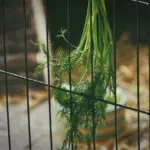Global kratom legality is inconsistent, with significant variations across countries. In the U.S., the DEA's attempt to classify kratom as a Schedule I substance in 2016 faced public opposition, leading to its placement on the less restrictive DEA Schedule Ivy list instead. The FDA continues to caution against kratom use due to health risks, while state-level regulations vary from bans to permissive policies. Canada categorizes kratom under its Controlled Drugs and Substances Act with a permit system for importation, sale, or possession. In Europe, the EMCDDA reports an increase in kratom use among those seeking drug treatment, with EU member states adopting different regulatory approaches; some have restricted or banned it, while others regulate it under specific conditions. Thailand's stance on kratom has been volatile, with a recent ban in 2020. Malaysia and Indonesia have differing controlled substance statuses, while Australia regulates kratom under its Poisons Standard, balancing consumer safety with scientific research. These disparate legal frameworks underscore the need for informed policy-making on kratom's role in public health, advocating for clear and consistent regulations to guide its use responsibly. Keywords: Kratom legality, DEA classification, FDA warnings, international drug policies, varying country regulations.
explore the complex landscape of kratom legality worldwide, with a detailed country-by-country analysis. This article delves into the nuanced regulatory frameworks that govern the use of kratom across continents, offering insights into its legal status in North America and Europe, as well as Asia and Oceania. From the varied approaches in the United States to the stringent policies in Thailand, each region presents a unique perspective on the regulation of this controversial substance. Join us as we navigate the intricate web of laws surrounding kratom’s legality globally.
- Kratom Legality Across the Globe: A Comprehensive Country-by-Country Analysis
- Navigating Kratom's Legal Status in North America and Europe: United States, Canada, and Beyond
- Exploring Kratom Laws in Asia and Oceania: From Thailand to Australia's Regulatory Framework
Kratom Legality Across the Globe: A Comprehensive Country-by-Country Analysis

The legal status of kratom, a plant native to Southeast Asia with psychoactive properties, varies significantly across different countries. In the United States, for instance, the DEA’s initial intent to classify kratom as a Schedule I substance in 2016 prompted significant public pushback, leading to it being instead included in the less restrictive Schedule Ivy list by the Drug Enforcement Administration. This action allowed for continued research and access to kratom while regulating its sale. In contrast, countries like Australia, Denmark, and Malaysia have taken a more stringent stance, scheduling or banning kratom entirely due to concerns over its psychoactive effects and potential for abuse. These differing regulations reflect the complexity of international drug policies and the varying perspectives on the risks and benefits associated with kratom use. Elsewhere, Thailand, where kratom is indigenous, has seen a pendulum swing from banning it to legalizing it for medical purposes, highlighting the evolving nature of kratom legislation globally. Each country’s approach to kratom legality is informed by its unique cultural, social, and health considerations, making the global landscape a mosaic of regulatory approaches.
Navigating Kratom's Legal Status in North America and Europe: United States, Canada, and Beyond

Kratom’s legal status varies across North America and Europe, with each country or region having its own regulatory framework. In the United States, the Drug Enforcement Administration (DEA) initially proposed a ban on kratom in 2016, classifying it as a Schedule I substance. However, following significant public outcry, the DEA’s decision was reversed. As of now, the FDA maintains its stance that kratom poses significant risks to public health, and an agency-wide directive has been issued to avoid distributing or marketing it as safe and effective. At the state level, regulations range from complete bans to permissive oversight, with many states still evaluating their stances on kratom legality.
Canada also approaches kratom’s legal status with a nuanced perspective. While not explicitly banned nationwide, kratom is a controlled substance under the Controlled Drugs and Substances Act, similar to opioids. This classification means that it requires a permit for its importation, sale, or possession. In Europe, the European Monitoring Centre for Drugs and Drug Addiction (EMCDDA) has reported a significant rise in kratom use among people seeking treatment for drug problems. The EU does not have a harmonized policy on kratom, leaving member states to enforce their own regulations. Some countries like Finland, Lithuania, Latvia, Denmark, and Poland have restrictions or bans on kratom, while others allow its sale under certain conditions. It’s important for consumers and vendors alike to stay informed about the evolving legal status of kratom in each jurisdiction within North America and Europe due to the dynamic nature of these regulations.
Exploring Kratom Laws in Asia and Oceania: From Thailand to Australia's Regulatory Framework

In various countries across Asia and Oceania, the legal status of Kratom has been a subject of debate and legislative action. In Thailand, for instance, Kratom’s historical relationship with local culture has evolved into a complex legal landscape. Initially considered a controlled substance in 1979, Kratom was later decriminalized before facing another ban in 2020, reflecting the shifting perceptions and regulatory decisions concerning its use. Neighboring countries have also taken varying stances on Kratom legality. Malaysia, for example, classifies Kratom as a controlled substance due to its psychoactive effects, while Indonesia’s approach varies by island, with some regions imposing strict regulations.
Venturing into Oceania, Australia has established a comprehensive regulatory framework for Kratom. The Australian Government has included Mitragyna speciosa, commonly known as Kratom, in the Poisons Standard under the therapeutic goods category, which mandates special access permits for its use. This regulatory approach is aimed at ensuring consumer safety while allowing for research and clinical trials to explore Kratom’s potential benefits and risks. The distinction in legal approaches across these regions underscores the importance of understanding local regulations when discussing Kratom legality, highlighting the need for informed and nuanced discussions on its use within the context of public health and policy-making.
The comprehensive analysis of Kratom legality across various countries has revealed a diverse regulatory landscape. From the nuanced policies in North America and Europe, where nations like the United States and Canada have differing stances, to the stringent regulations in Asia, particularly Thailand, and the balanced approach in Australia, it’s evident that each region approaches Kratom regulation based on its unique context and public health considerations. This article has provided a clear picture of the current legal status of Kratom worldwide, underscoring the importance of informed policymaking and continued dialogue among stakeholders to ensure safe access and consumer protection. As such, it serves as a valuable resource for those interested in understanding the complex nature of Kratom’s legality globally.






